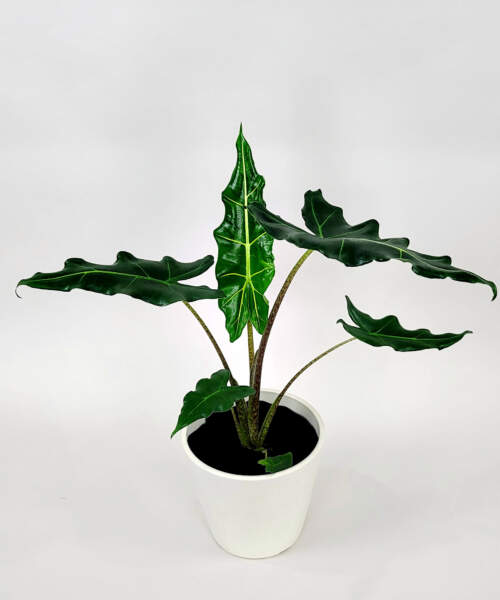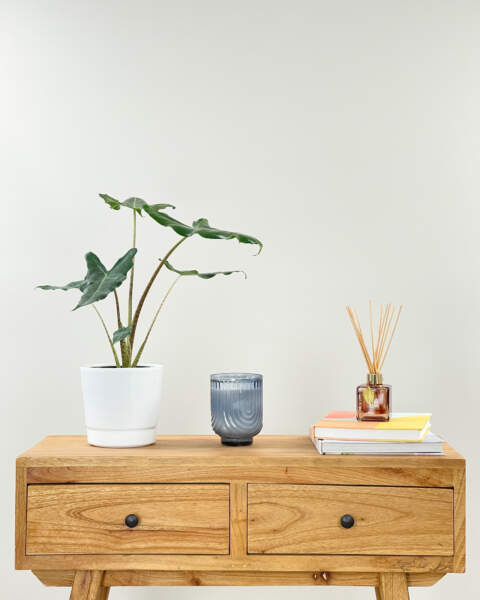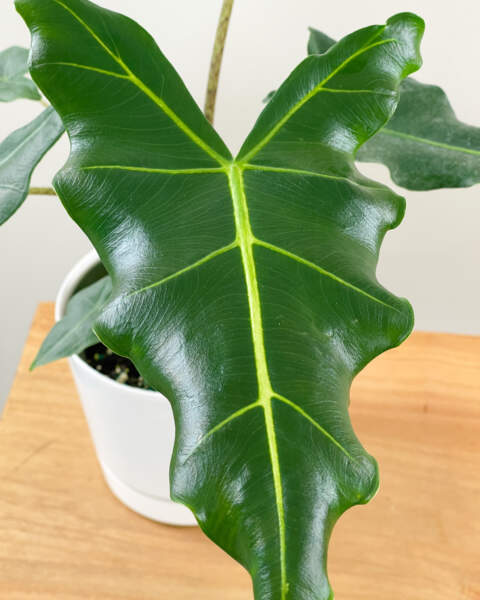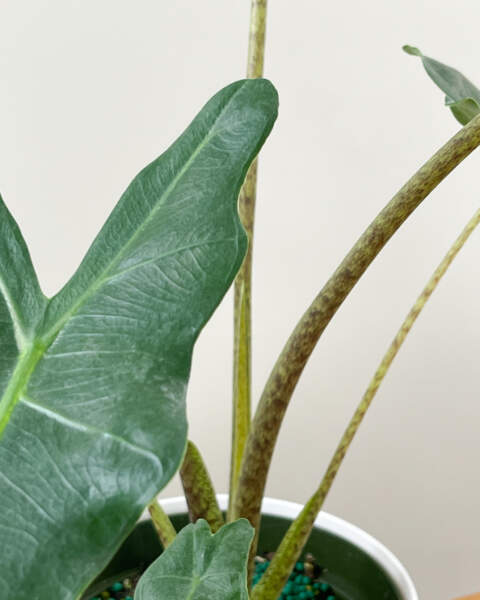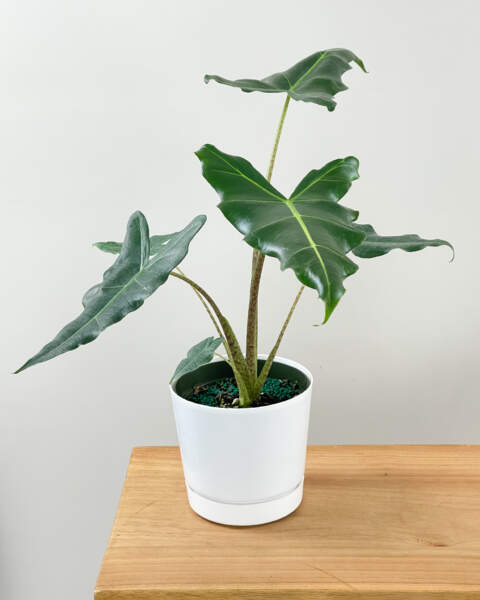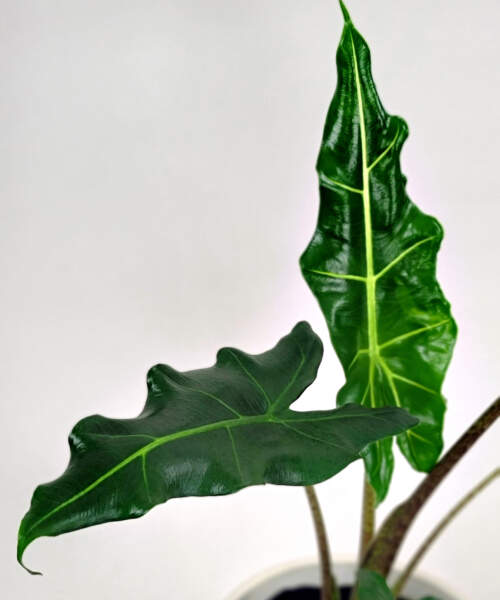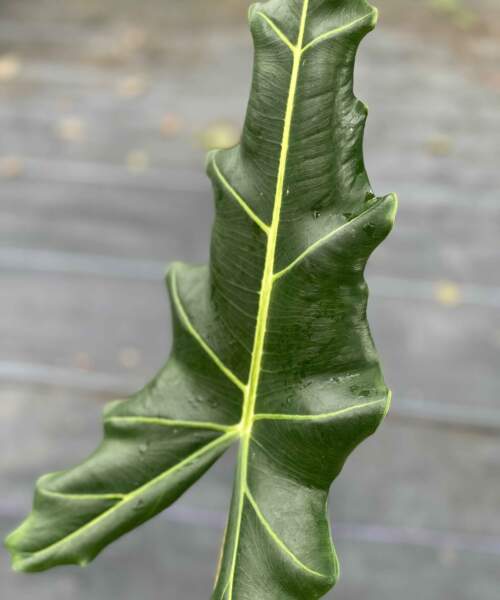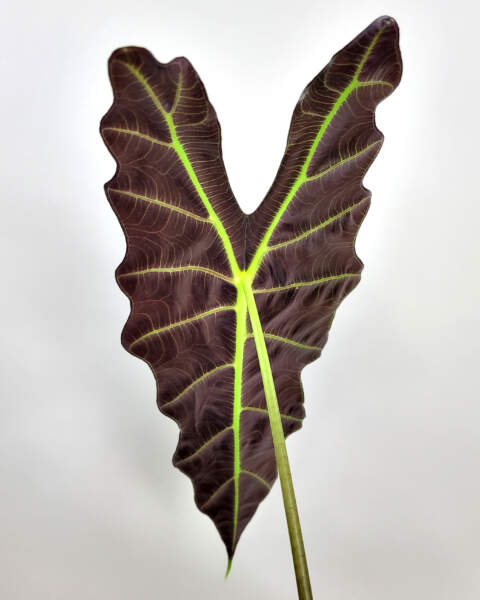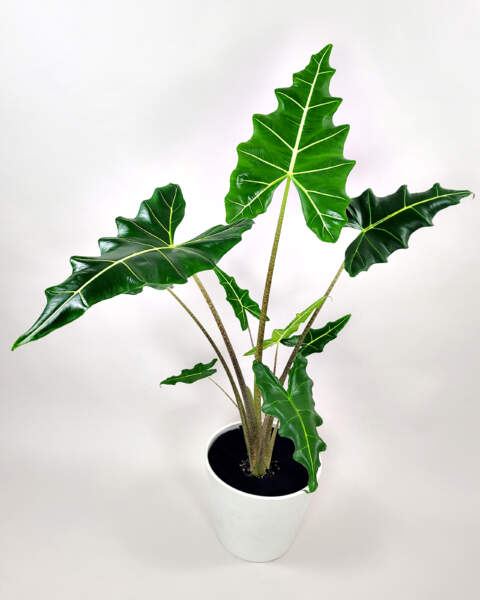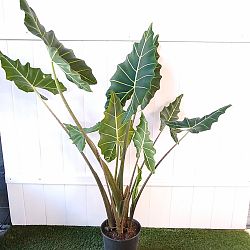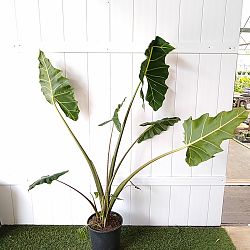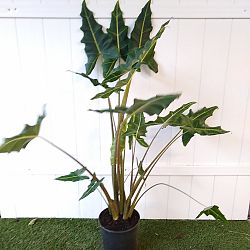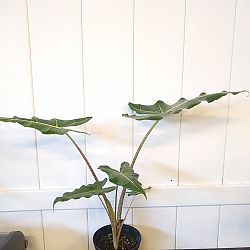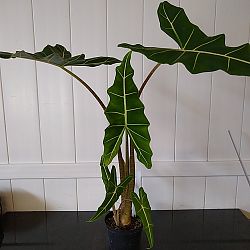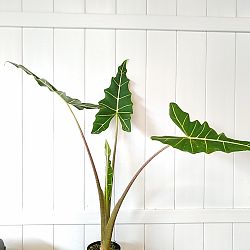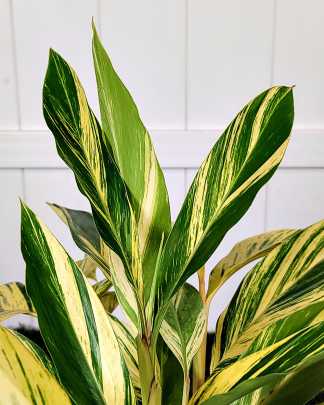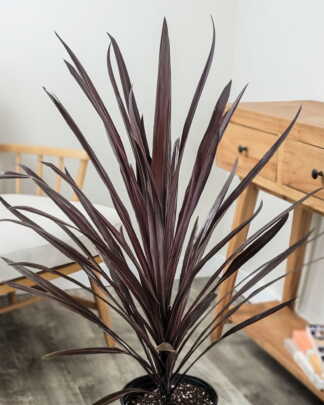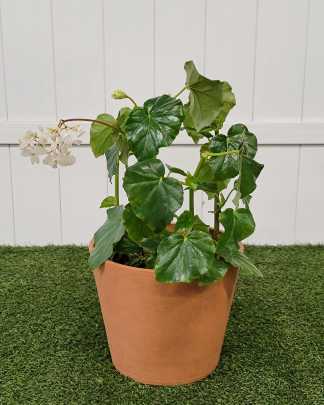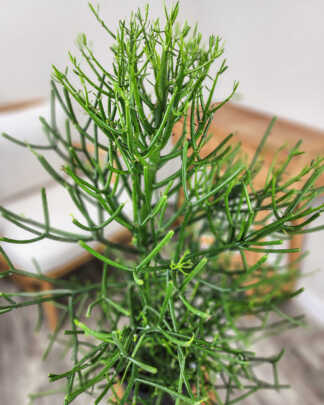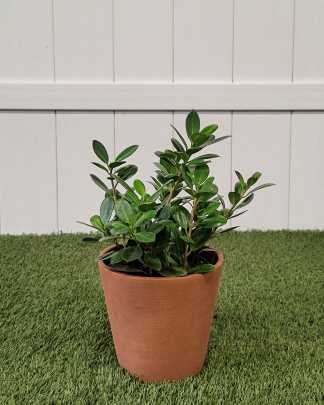Description
Taking Elephant Ears to a New Regal Level
Alocasia ‘Sarian’ is a tropical plant with stunning arrow-shaped leaves that can add a touch of exotic beauty to any indoor or outdoor space. Native to Southeast Asia, this plant is a hybrid of Alocasia micholitziana and Alocasia watsoniana.
Caring for your Alocasia ‘Sarian’
Lighting
Alocasia ‘Sarian’ prefers bright, indirect light. Direct sunlight can scorch the leaves and cause damage to the plant. A north or east-facing window with filtered sunlight is ideal. If you notice the leaves turning yellow or brown, it may be a sign that the plant is receiving too much light.
Temperature
Alocasia ‘Sarian’ prefers warm temperatures between 60°F to 80°F (15°C to 26°C). Avoid exposing the plant to temperatures below 50°F (10°C), as this can damage the plant. Keep the plant away from drafty windows or doors.
Humidity
As a tropical plant, Alocasia ‘Sarian’ requires high humidity levels to thrive. It prefers humidity levels of at least 50%. If the air in your home is dry, consider placing a humidifier near the plant or misting it regularly. You can also place the plant on a tray filled with pebbles and water, making sure that the water does not touch the bottom of the pot.
Watering
Alocasia ‘Sarian’ prefers moist soil, but it does not like to be waterlogged. Overwatering can cause the roots to rot and can eventually kill the plant. Water the plant when the top inch of soil feels dry to the touch. During the winter months, reduce watering and allow the soil to dry out slightly between waterings.
Fertilizer
Alocasia ‘Sarian’ benefits from regular fertilization during the growing season, which is typically from spring to fall. Use a balanced liquid fertilizer every two weeks to promote healthy growth. Avoid fertilizing during the winter months when the plant is dormant.
Potting
Alocasia ‘Sarian’ prefers to be slightly pot-bound, so avoid repotting it too frequently. When the plant has outgrown its current pot, move it to a pot one size larger. Use a well-draining soil mix that is rich in organic matter, such as peat moss or coconut coir. Make sure the pot has drainage holes to prevent water from accumulating in the bottom.
Pruning
Alocasia ‘Sarian’ does not require frequent pruning, but it may be necessary to remove any damaged or yellowing leaves. Use clean, sharp pruning shears to make a clean cut at the base of the stem. You can also prune the plant to maintain its shape or size. This is best done in the spring or early summer when new growth is starting to appear.
Propagation
Alocasia ‘Sarian’ can be propagated through division. When the plant has outgrown its pot, carefully remove it from the pot and gently separate the root ball into smaller sections. Make sure each section has at least one stem and several leaves. Plant each section in a pot filled with well-draining soil, making sure to water it thoroughly.
Pests and Diseases
Alocasia ‘Sarian’ is generally a hardy plant that is not prone to pests or diseases. However, it may occasionally attract mealybugs, spider mites, or scale insects. To treat pests, wipe the leaves with a damp cloth or use an insecticidal soap. Avoid using any harsh chemicals that may damage the plant.

